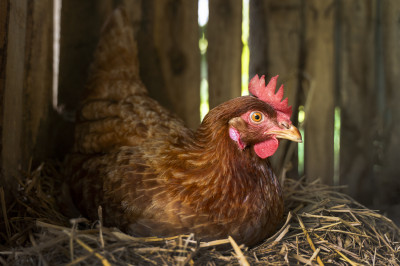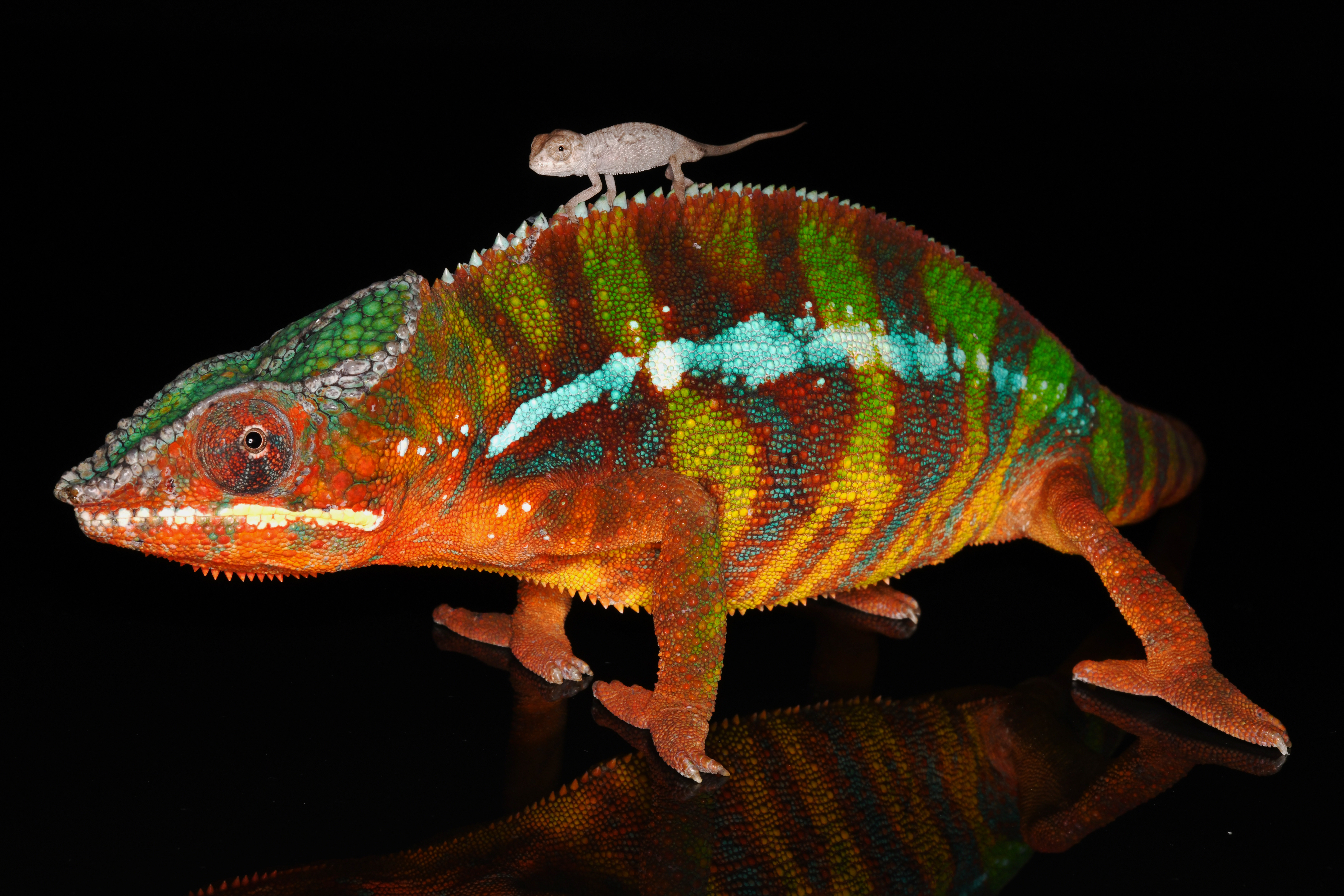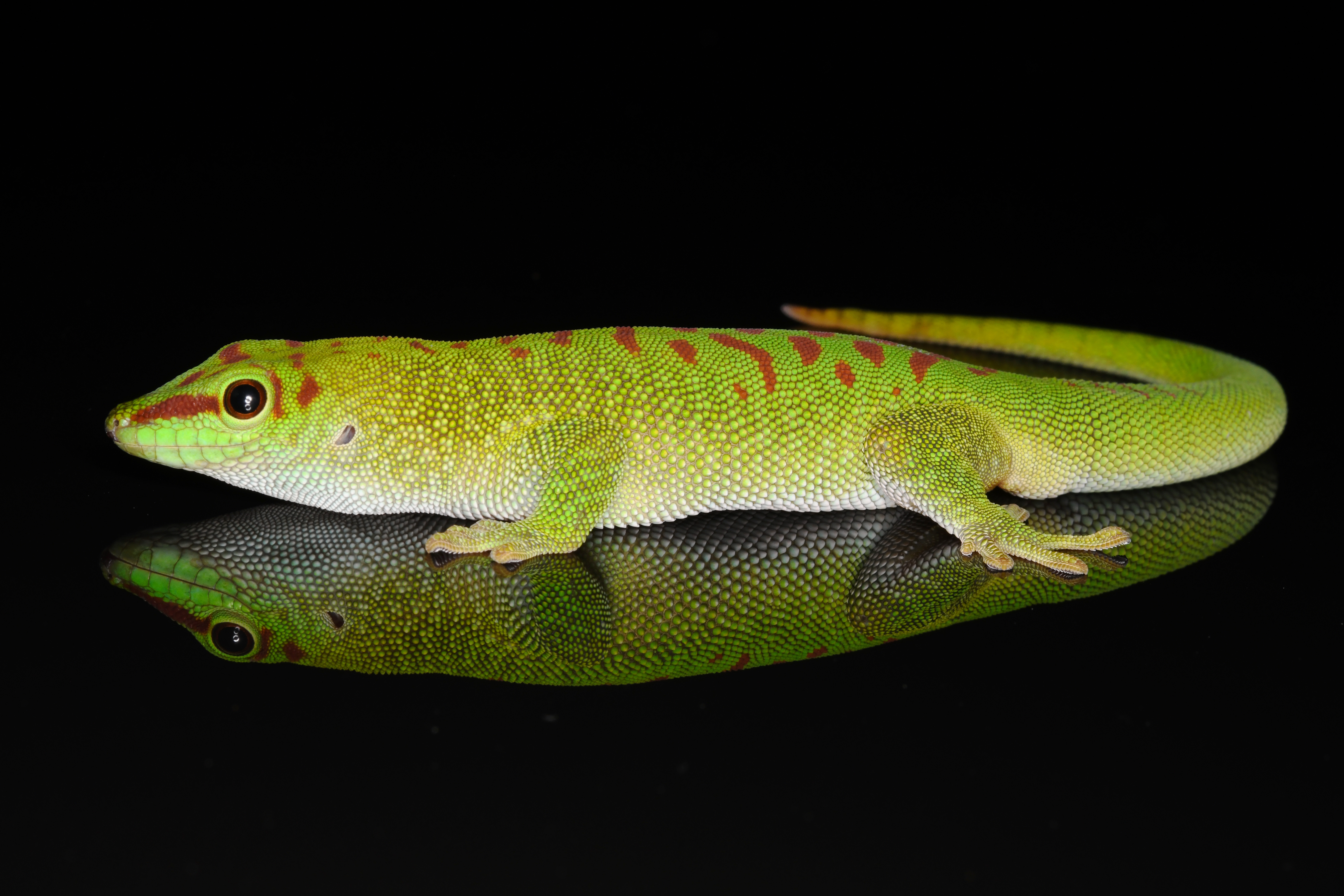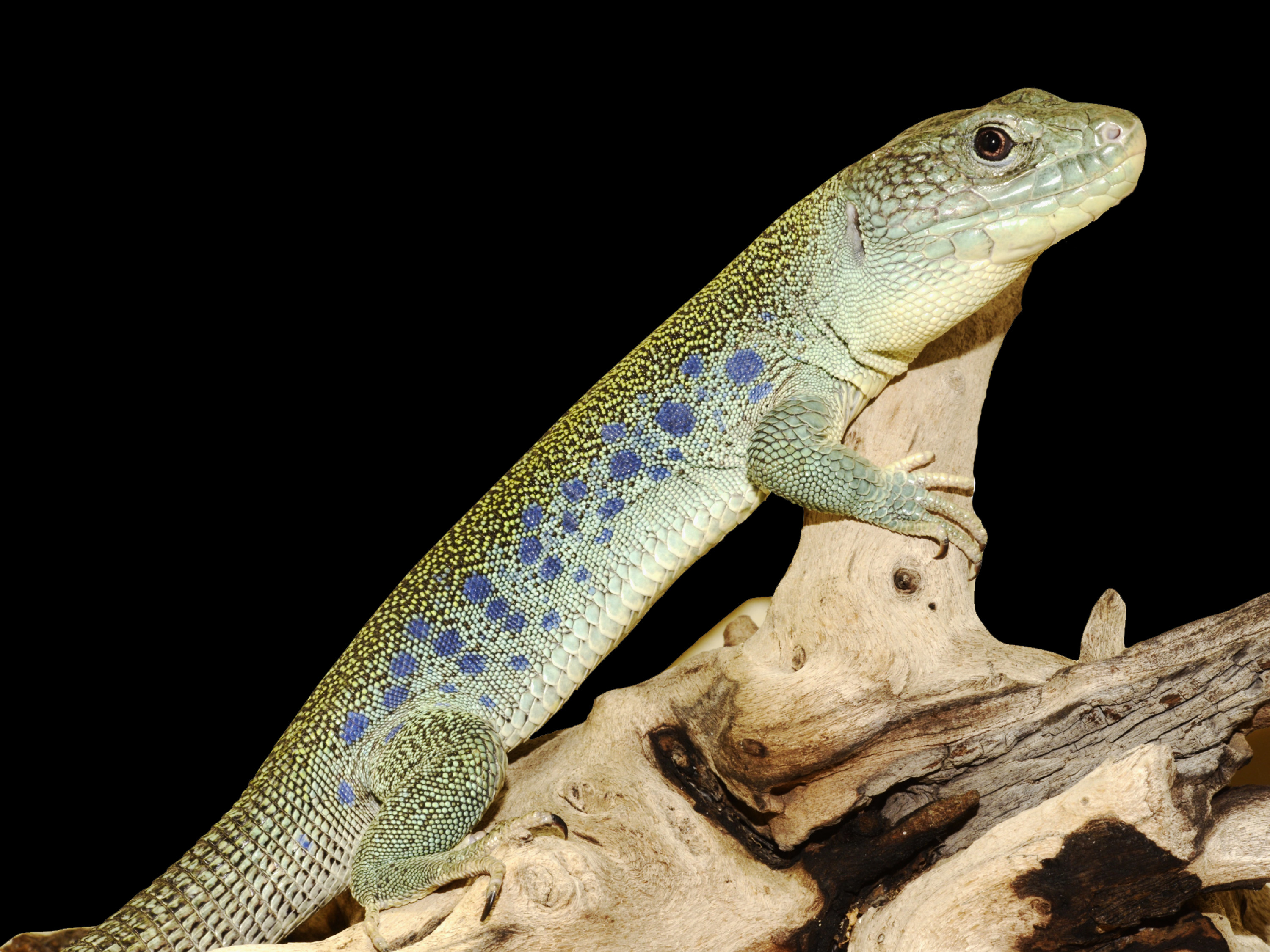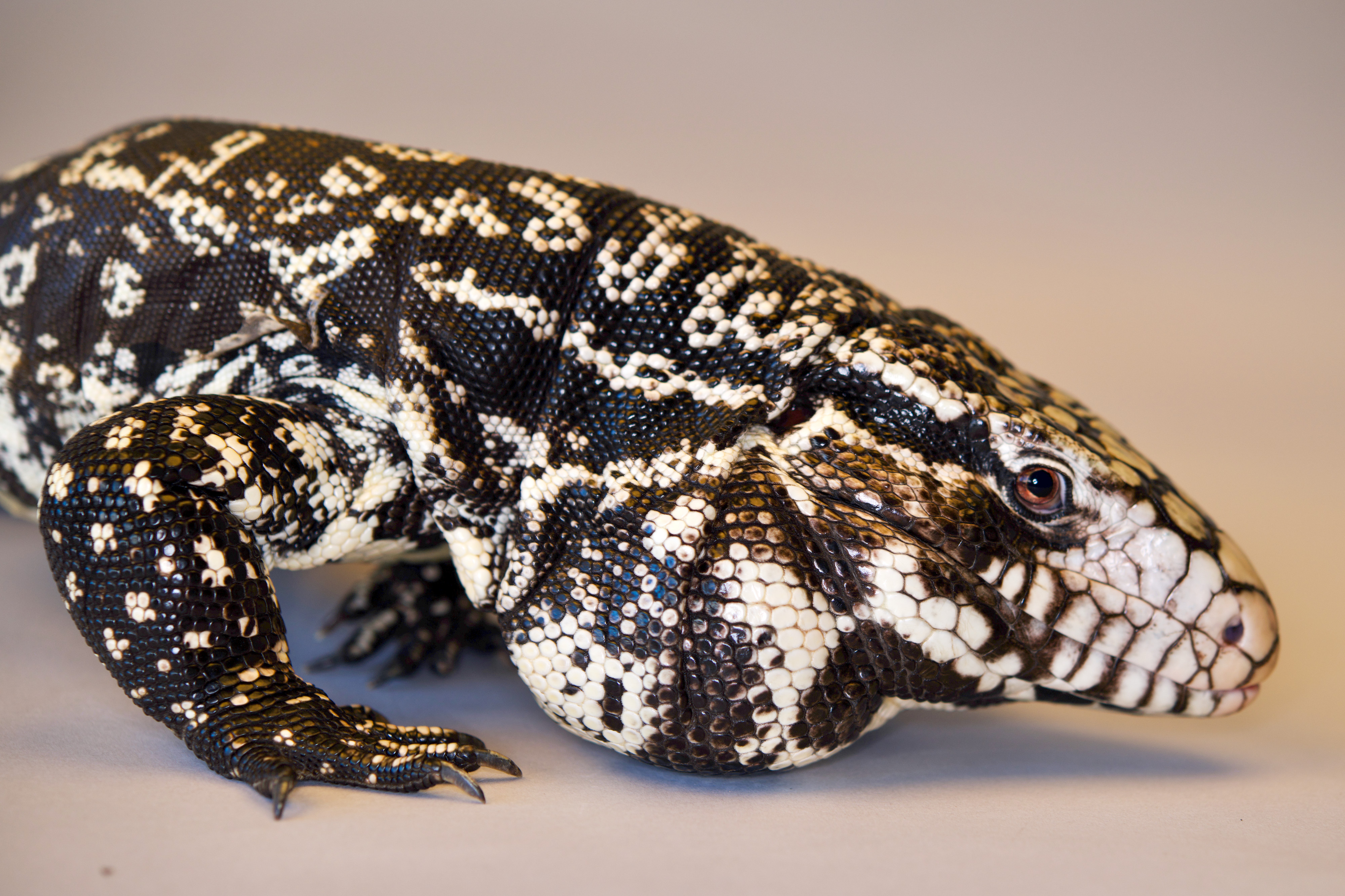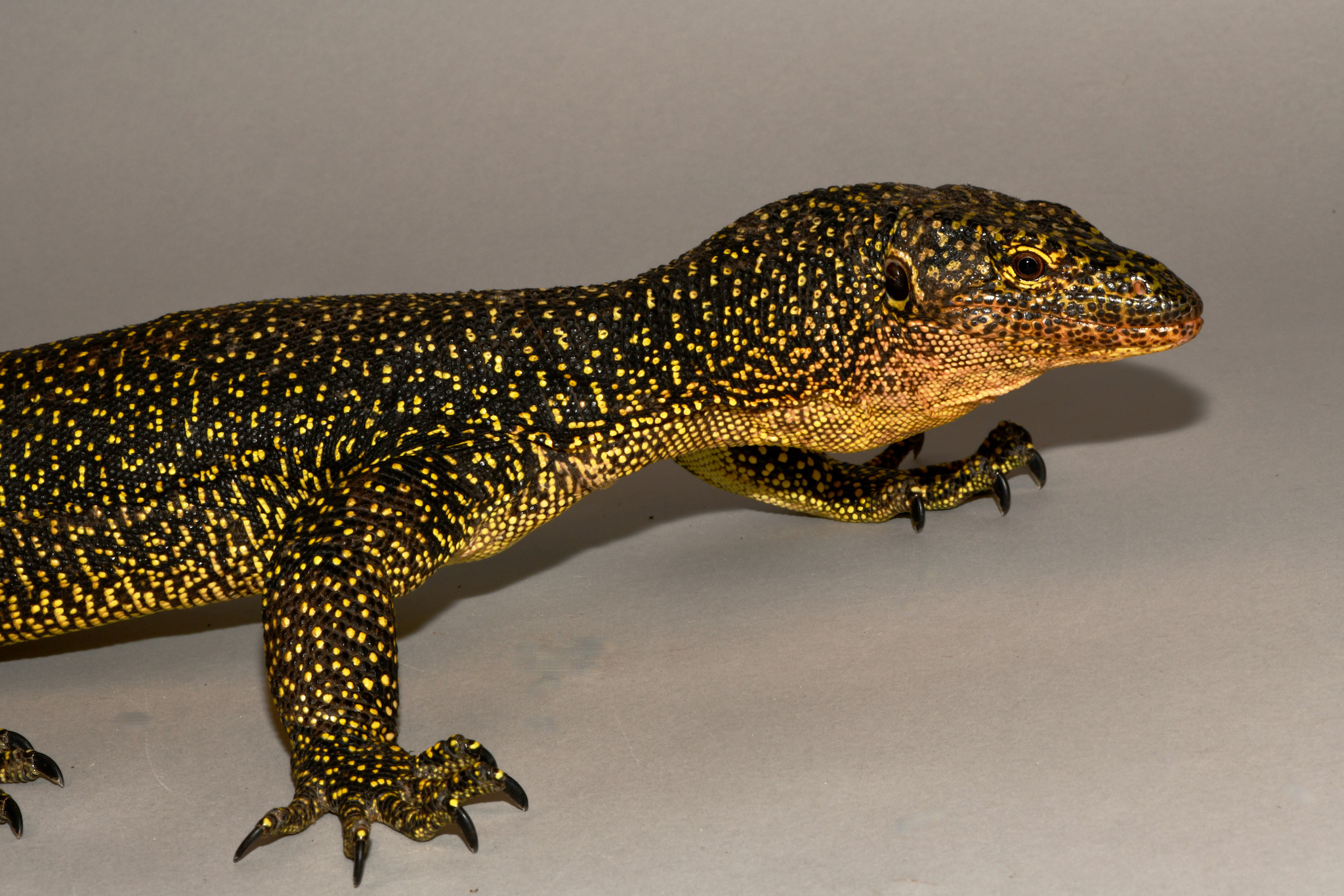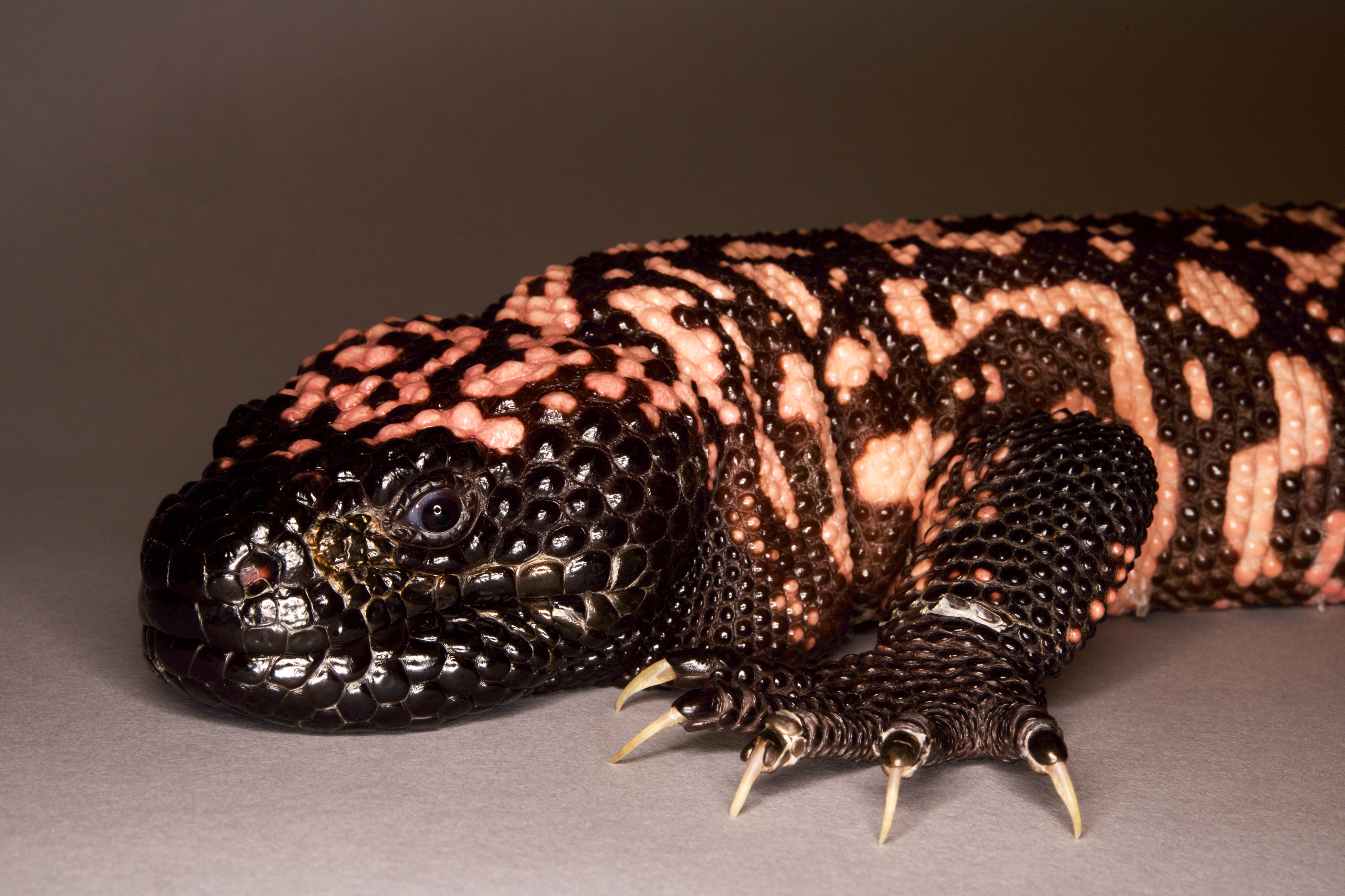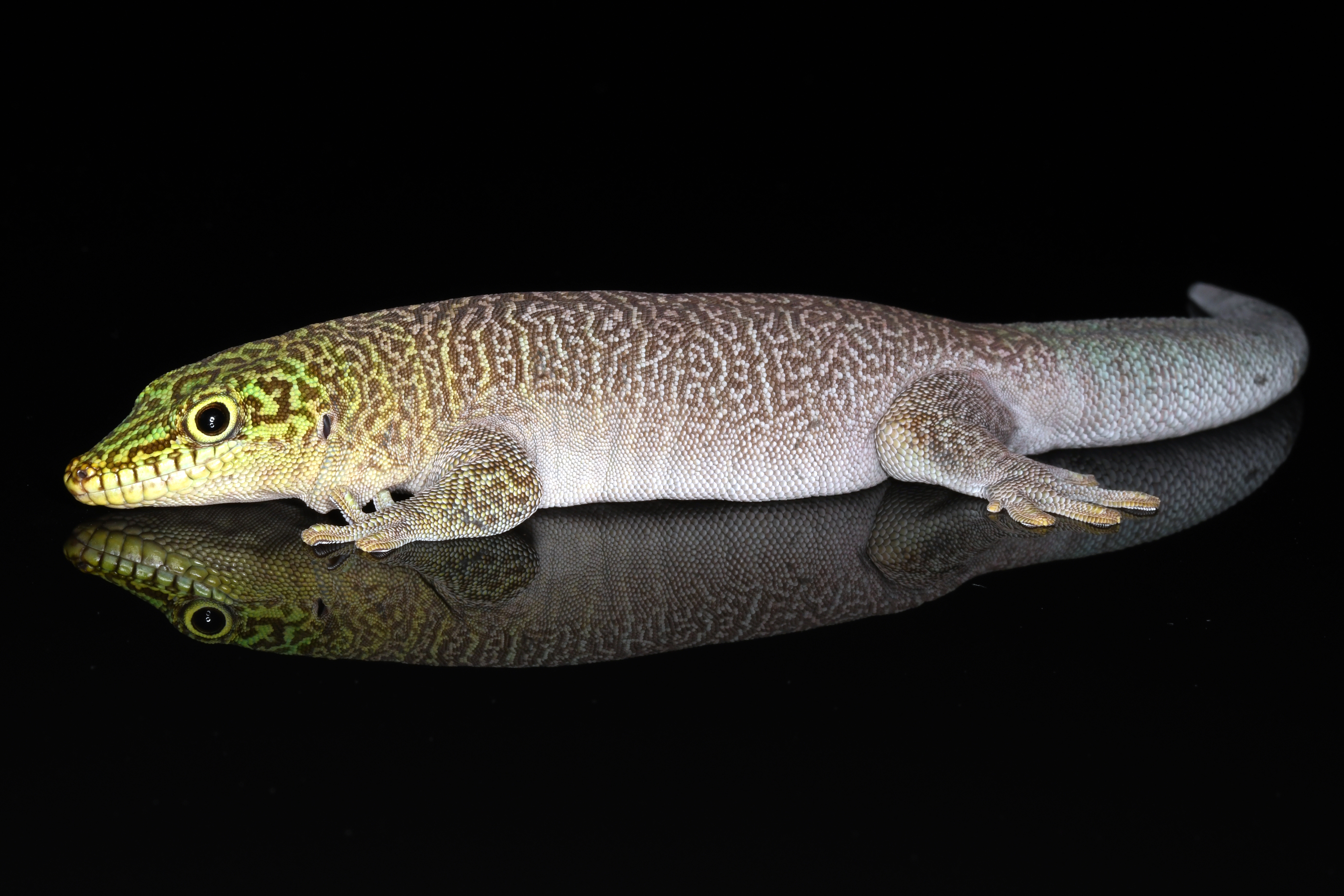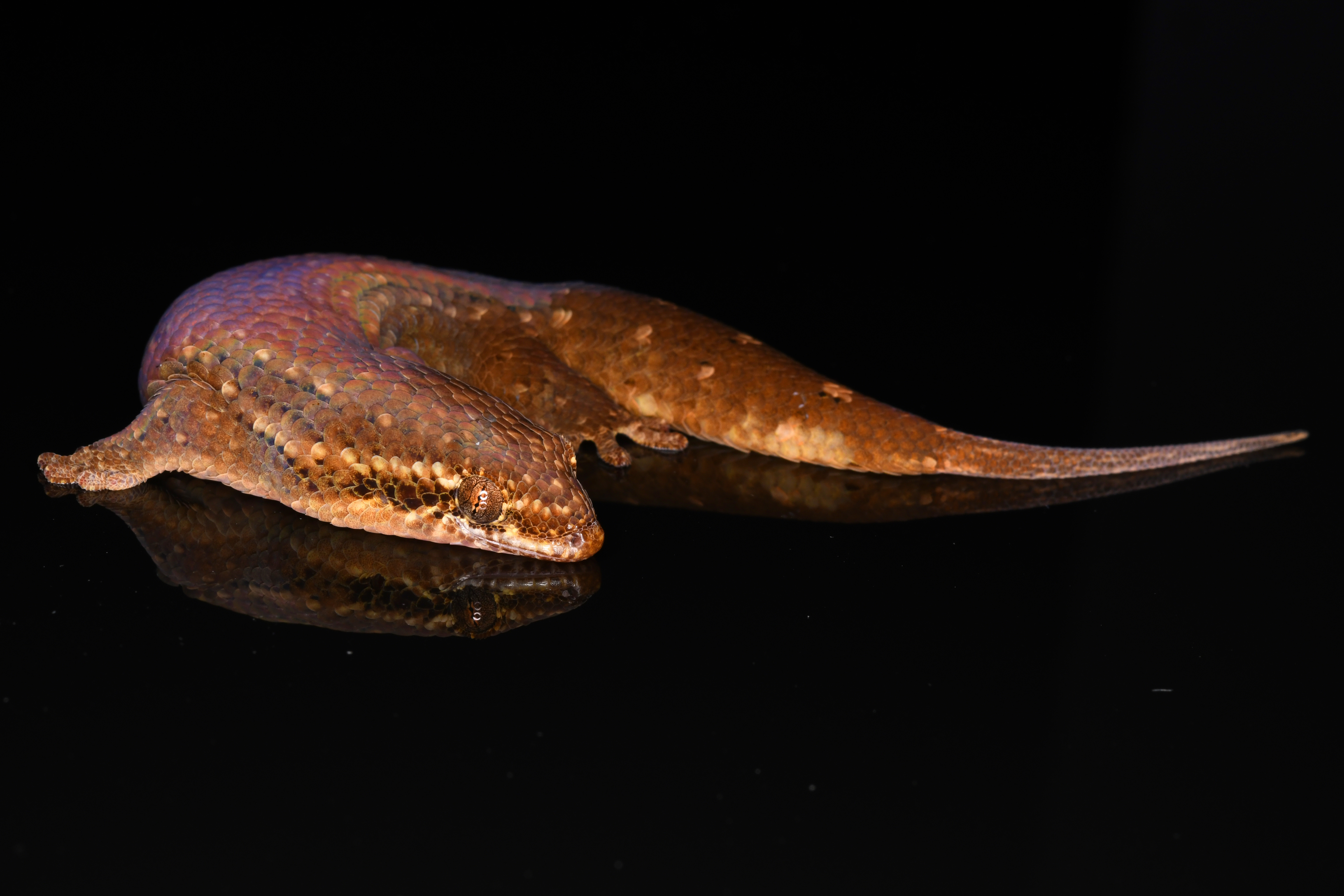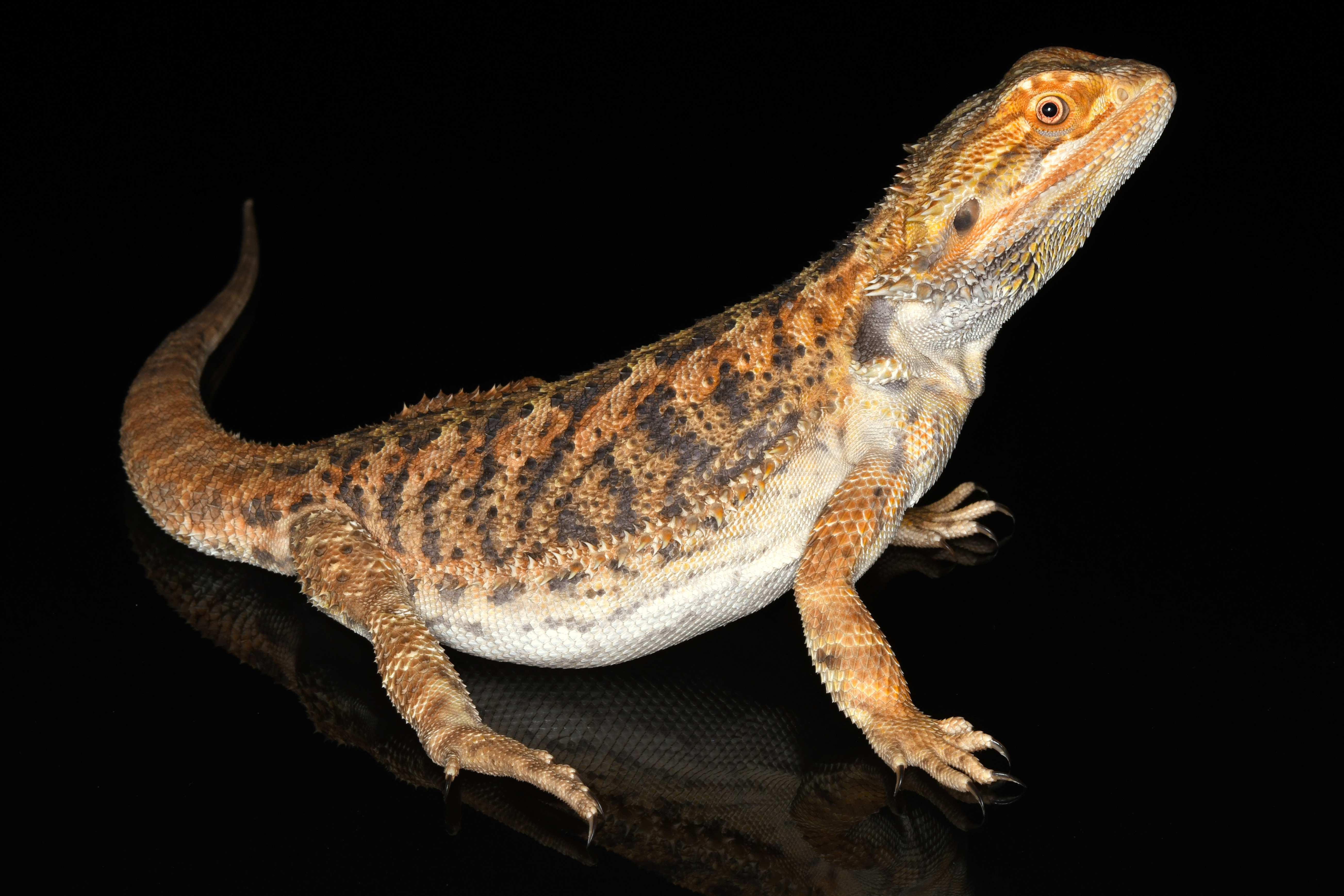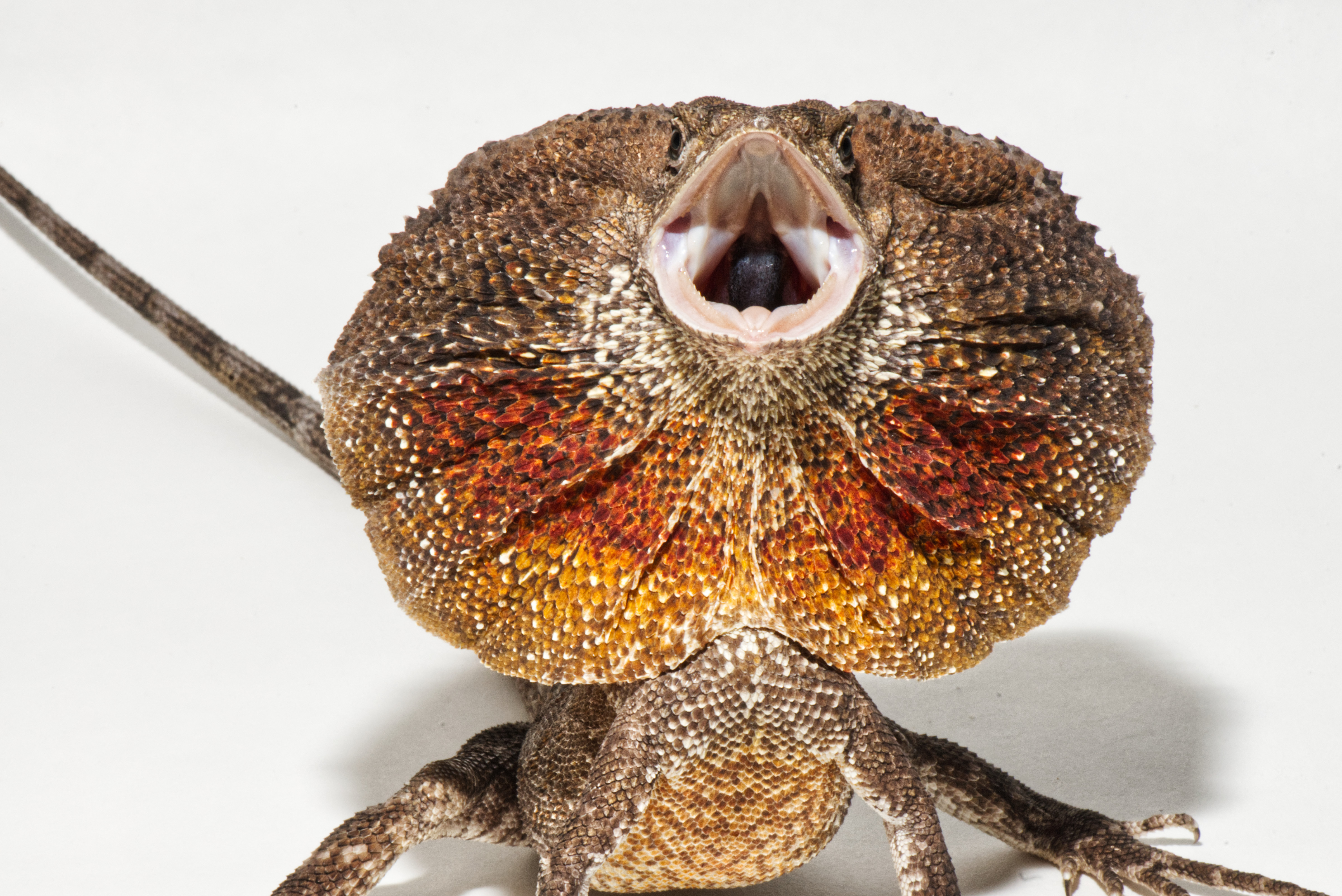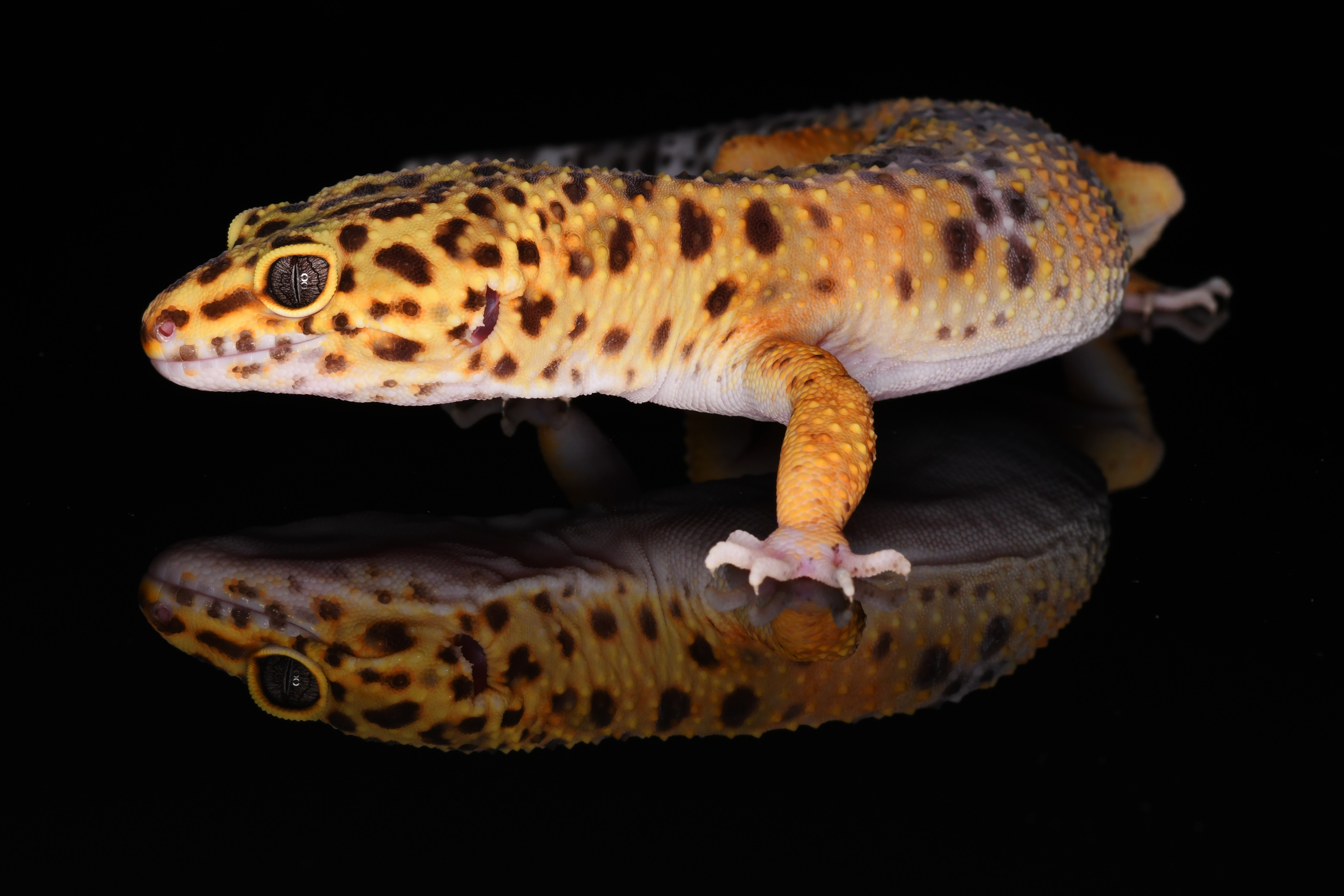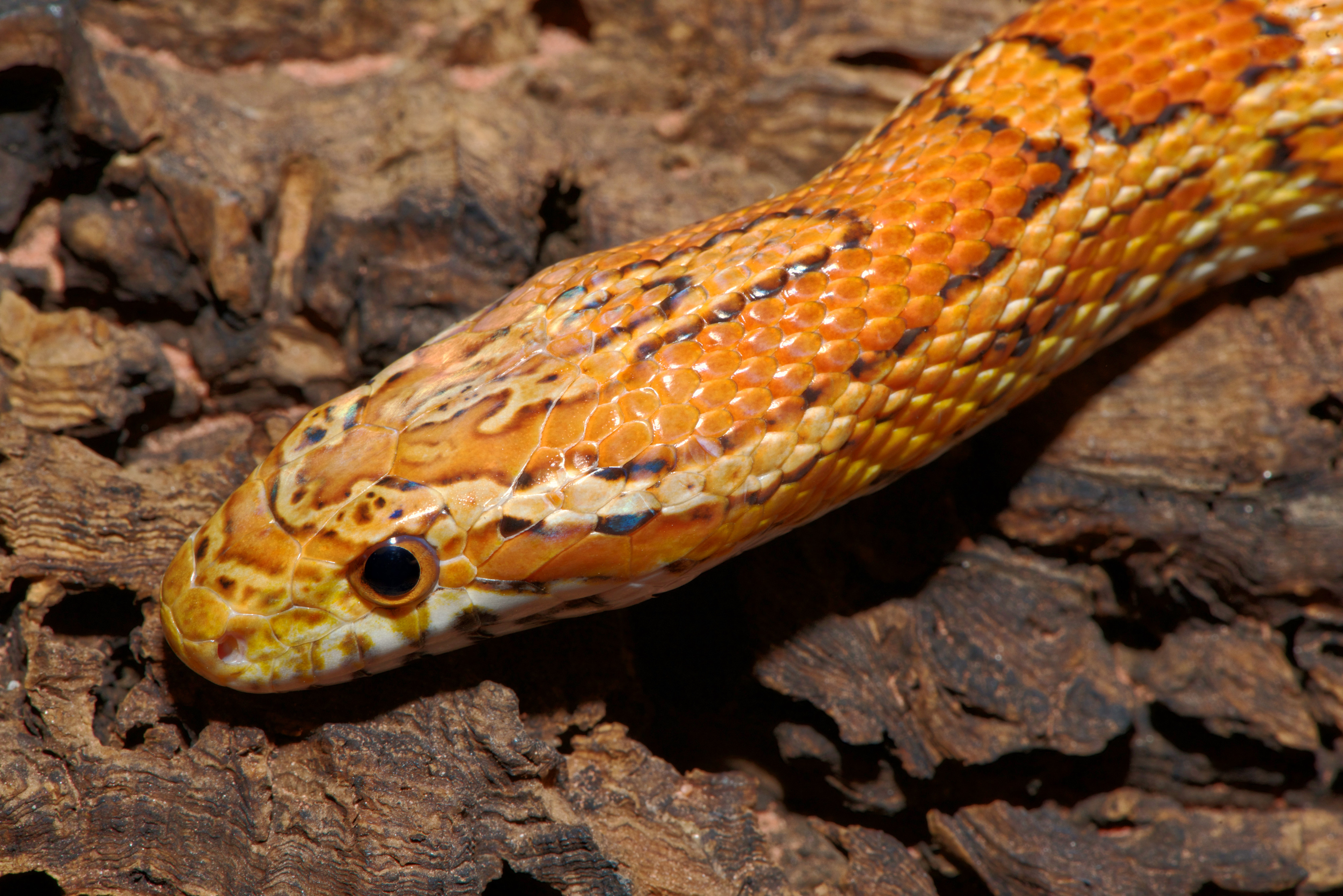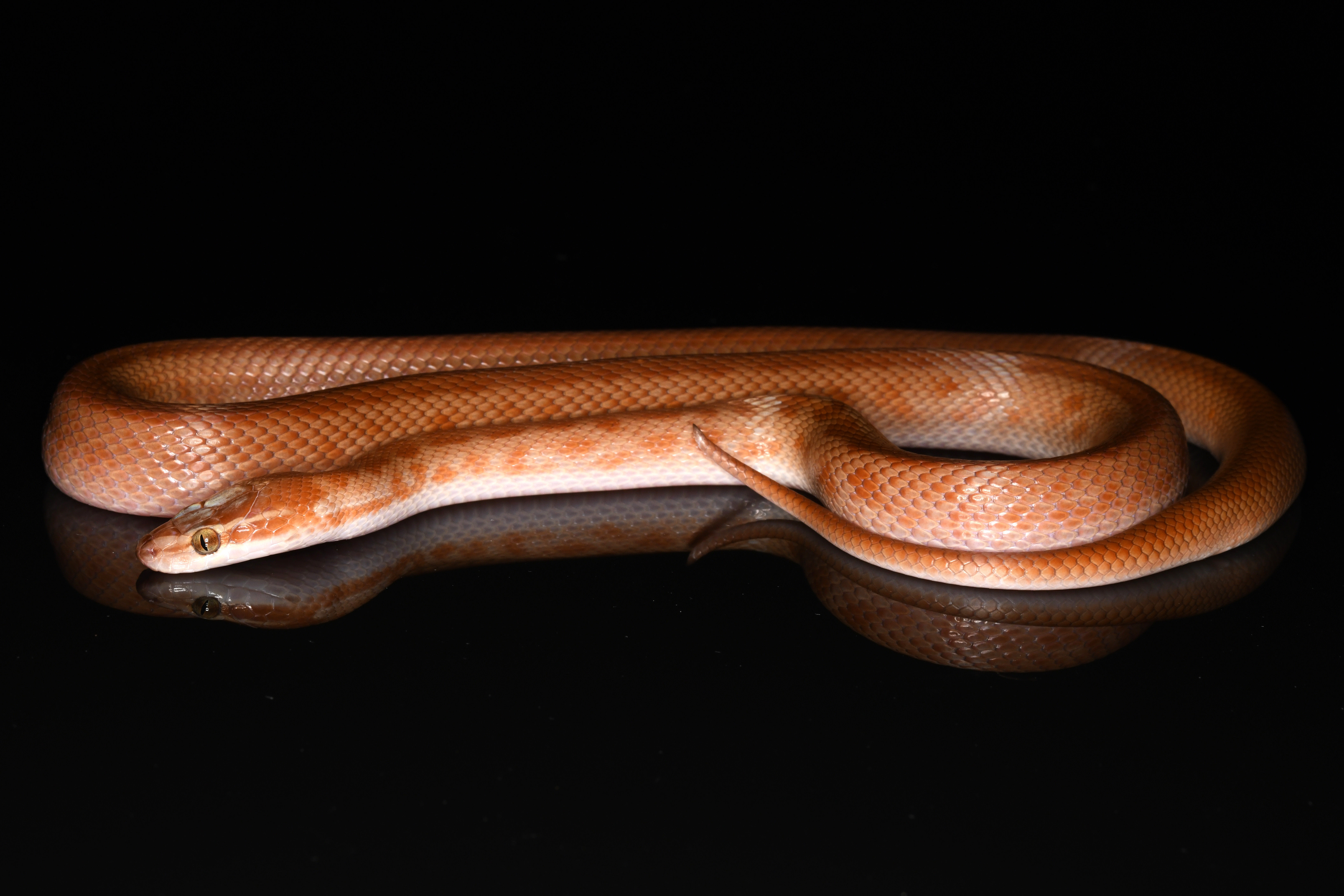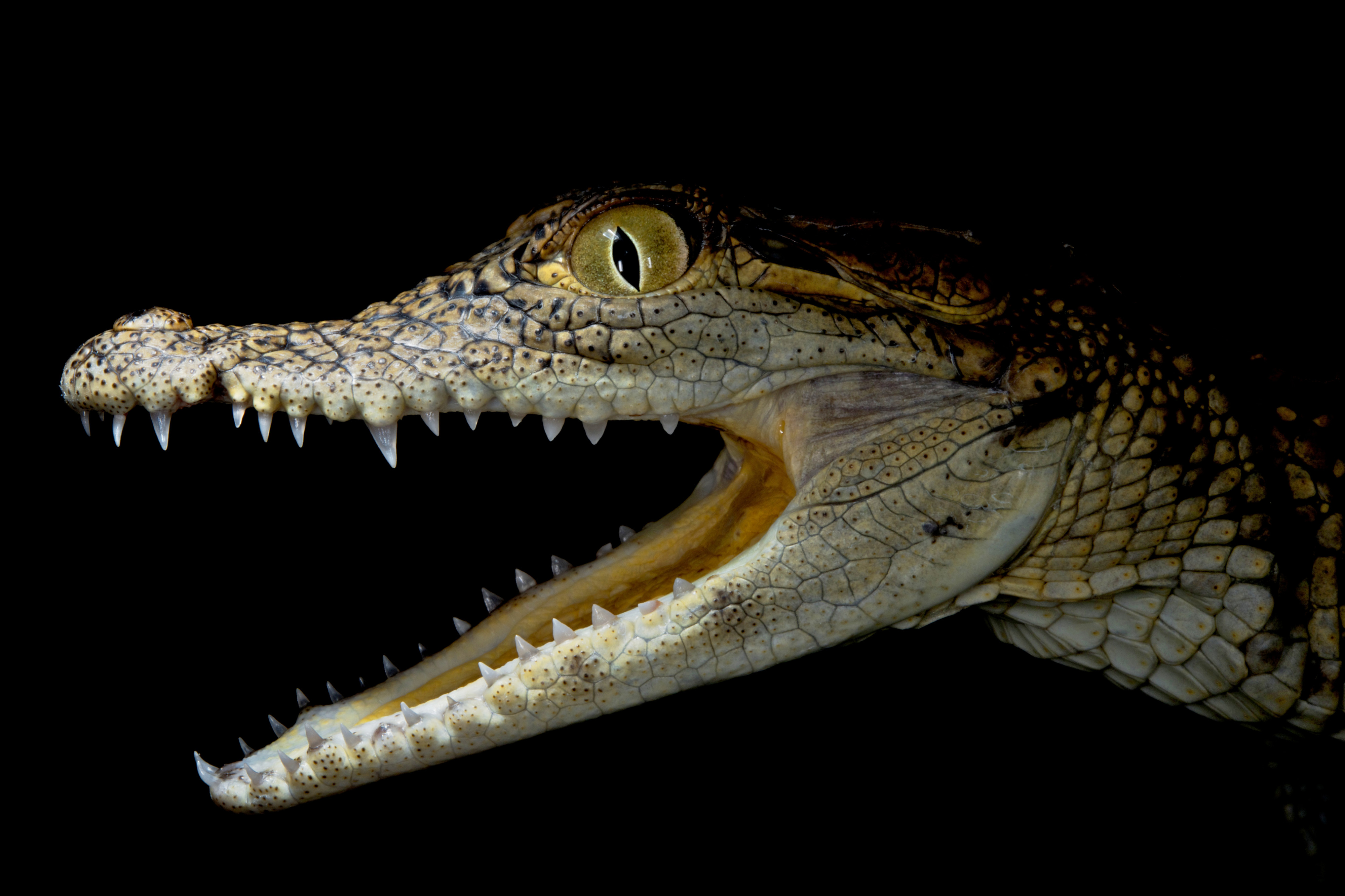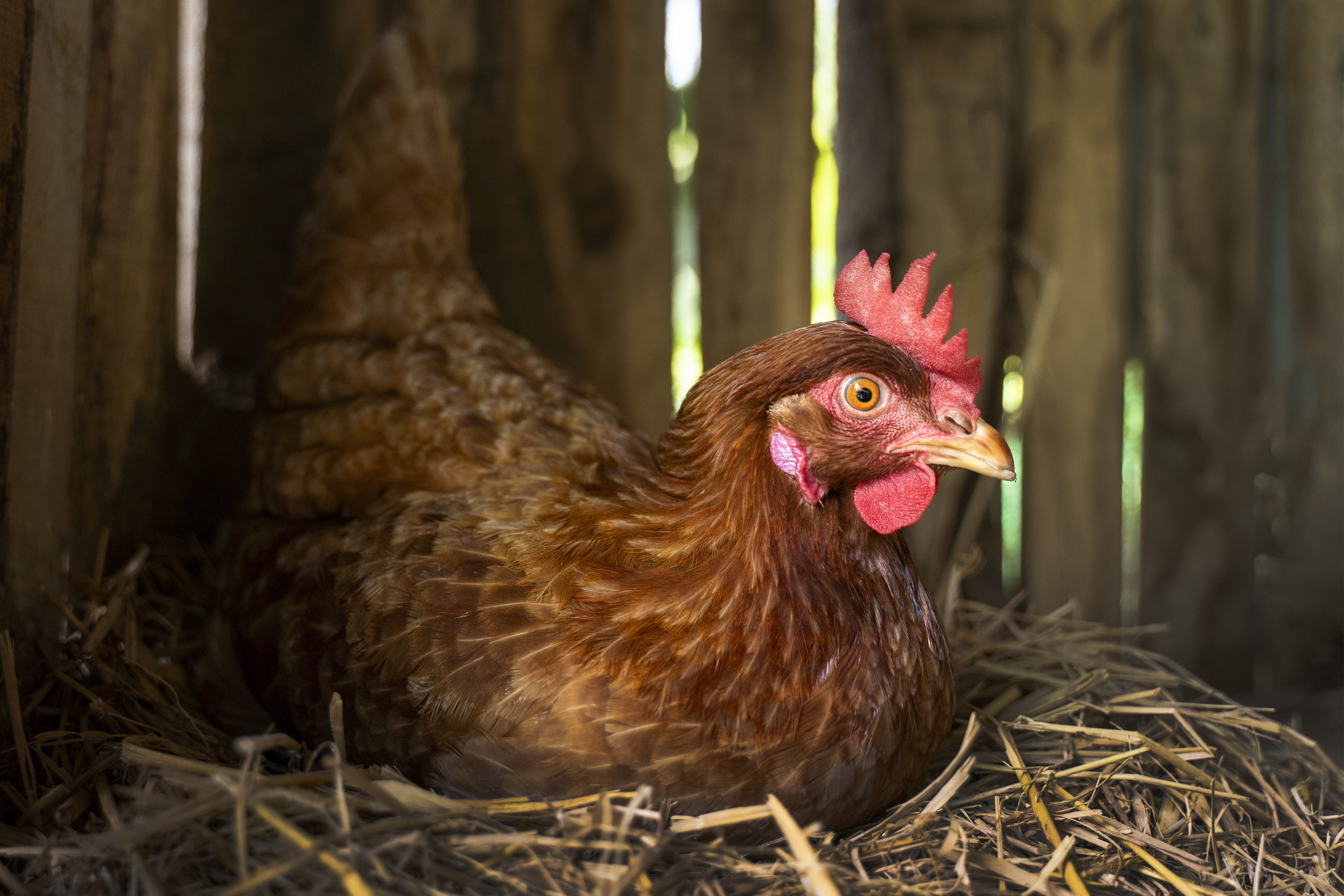Reptilian models
Furcifer pardalis
"the panther chameleon"
This spectacular lizard is endemic to Madagascar and inhabits humid forests mainly in the north and north-east of the great island. Species in the Chamaeleonidae family are iconic animals: they have evolved and developed multiple specific characteristics such as a projectile tongue, zygodactyl feet, and two well-developed eyes that can swivel independently. Note that our laboratory has identified the mechanisms by which the chameleon’s skin can spectacularly change colour and provide protection against infrared radiation. In addition, our population genetic analyses indicate the presence of geographically-restricted lineages of panther chameleons that may belong to 11 different new species.
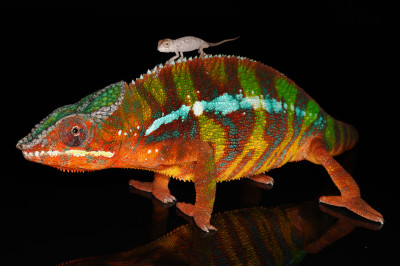
Phelsuma grandis
"the Madagascar giant day gecko"
This lizard, from the Gekkonidae family, is an arboreal species that inhabits northern forests of the great island. Reaching a maximum size of 20 cm, it is one of the biggest day geckos. Many of its characteristics, such as its hardiness, sociability and capacity to breed throughout most of the year, make the Madagascar giant day gecko a convenient model species. It is by studying this species that our laboratory has identified how multiple species of lizards and snakes make their characteristic bright green skin colour, despite not harbouring any green pigment. We also use this species to study the development of nodular scales in reptiles.
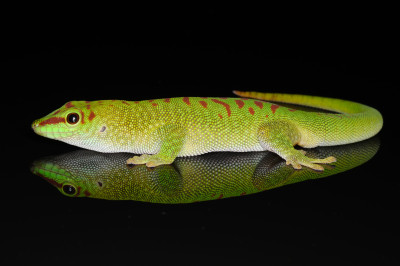
Timon lepidus
"the ocellated lizard"
This species, of the Lacertidae family, is endemic to southwestern Europe (especially across Spain and Portugal) and displays vibrant green scales and deep black scales on its back, as well as deep-blue eyespots on its flanks. This species has a special place in our hearts because Michel proposed that the patterning process that generates the adult labyrinthine pattern — chains of monochromatic green and black scales — is a cellular automaton (CA; a computational system invented in 1948 by John von Neumann), i.e., scales switch colour not autonomously, but depending on the colours of their neighbours. Using histology, numerical simulations and mathematical derivation, we have confirmed this hypothesis by identifying that skin thickness variation generated by 3D morphogenesis restricts diffusion at the borders of scales and causes the underlying Turing’s mechanism to transform into a CA. This biology-driven research links, for the first time, the work of two mathematical giants (Turing and von Neumann).
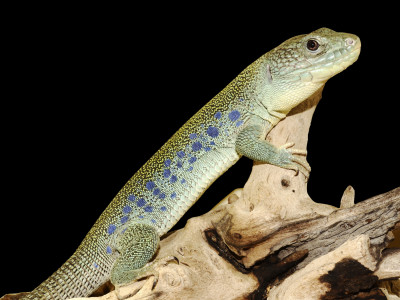
Salvator merianae
"the black & white tegu"
This relatively gentle omnivorous South-American giant, of the the Teidae family, has evolved scale-by-scale coloration, a convergence with ocellated lizards (see above), Gila monsters, mangrove monitors and Standing's day geckos (see below). We have shown that these five divergent species of lizards have independently evolved dynamics of scale-by-scale skin colour patterning. These dynamics emerge from the superposition of the bumpy skin geometry (because of the presence of scales) with the self-organised segregation of chromatophore cells.
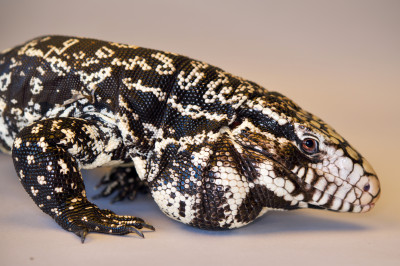
Varanus indicus
"the mangrove monitor"
This medium-sized lizard, from the Varanidae family, occupies a wide range of habitats from Solomon Island to Papua New Guinea. It has evolved scale-by-scale coloration, a convergence with the ocellated lizard and with the black & white tegu (see above), but also Gila monsters and Standing's day geckos (see below). We have shown that these five divergent species have independently evolved dynamics of scale-by-scale skin colour patterning. Although the final patterns exhibited by these five species are very different, we have shown that all these cellular-automaton-like dynamics emerge from the superposition of skin geometry with the underlying reaction-diffusion process.
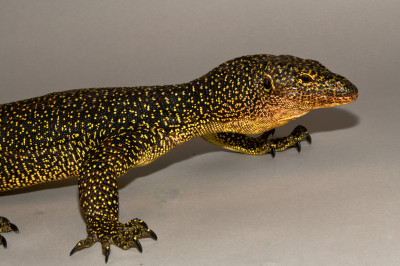
Heloderma suspectum
"the Gila monster"
As the other members of the genus, the Gila monster is one of the very few truly venomous lizards. It belongs to the Helodermatidae family and it is native to the Southwestern USA and northwest Mexico. They exhibit a beautiful pattern of large black-and-orange meanders. As for the ocellated lizard, the white and black tegu, the mangrove monitor (see above) and the Standing's day gecko (see below), we have shown that the adult pattern of the Gila monster is computed by a cellular automaton made of monochromatic skin scales that flip colour, from black to orange and from orange to black.
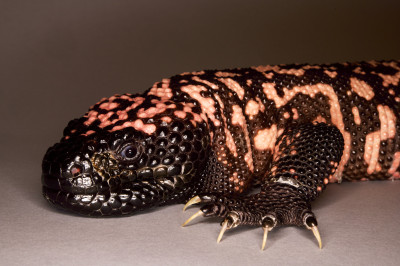
Phelsuma standingi
"the Standing's day gecko"
This Madagascan species belongs to the Gekkonidae family and is anatomically very similar to Phelsuma grandis (see above), but with a very different skin colour pattern: juveniles exhibit dark transversal bands that transforms, scale by scale, into a highly-labyrinthine pattern. Here again, we have shown that the Standing's day gecko is a ‘cellular-automaton lizard’ that evolved scale-by-scale colour flipping dynamics.
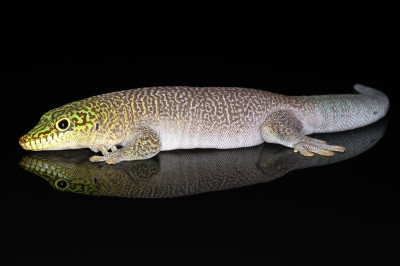
Geckolepis maculata
"the fish-scale gecko"
This small nocturnal lizard, of the Gekkonidae family, is endemic to Madagascar and it exhibits a remarkable ability: when a predator attempts to grab it, the fish-scale gecko can lose its highly asymmetric and overlapping scales through autotomy. In other words, the predator finds itself with a bunch of scales in its mouth while the nearly ‘naked’ gecko escapes thanks to its scale-shedding abilities. The lost scales regenerate perfectly within five to six weeks. We are investigating that phenomenon in the lab.
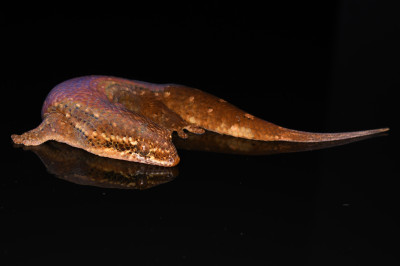
Pogona vitticeps
"the central bearded dragon"
This medium-size lizard, of the Agamidae family, inhabits arid eastern and central Australia. This species became the world’s most popular pet lizard because it can be easily kept and bred in captivity. In our laboratory, we investigate the development of the various types of scales, such as the spines forming the animal’s ‘beard’.
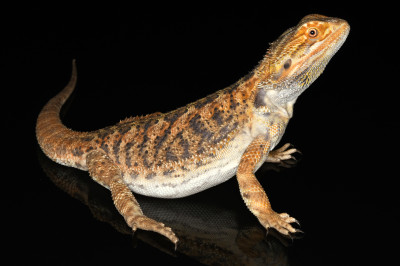
Chlamydosaurus kingii
"the frilled lizard"
This spectacular species, of the Agamidae family, is native to northern Australia and southern New Guinea. Our laboratory has identified the evolutionary developmental origin of the emblematic large erectile ruff — also called 'neck frill' — that the animal can spread for predator deterrence, territorial display and courtship.
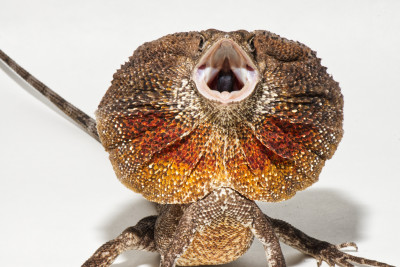
Eublepharis macularius
"the leopard gecko"
This small lizard, from the Eublepharidae family, lives in arid regions in the Middle East and central Asia, from Iran to Nepal. Wild-type hatchlings exhibit broad transversal dark-brown bands on an orange background but it progressively transforms into the adult pattern made of irregular black spots on a yellow background. However, there are multiple mutant ‘morphs’ whose colours and/or patterns are modified in comparison to the wild type. Our laboratory aims to identify the causal mutations and the corresponding changes in chromatophore development and interactions generating these variations in colour and patterning.
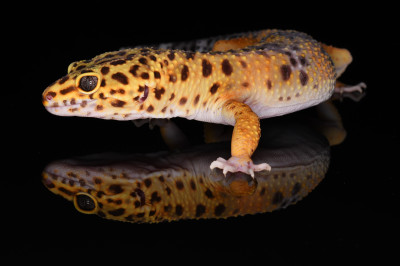
Pantherophis guttatus
"the corn snake"
This North American species, of the Colubridae family, is an iconic snake among fanciers and hobbyists. As the species has been bred in captivity for more than 60 years, multiple so-called ‘morphs’ have been selected for their peculiar colours or patterns. For example, whereas the wild-type morph exhibits dark-orange motifs with a black outline (dorsal saddles and lateral blotches), as well as a checkerboard of black-and-white belly scales, some morphs lack black or red/orange coloration, and some are homogeneously red or show longitudinal stripes. We have produced extensive families of 16 different morphs and we aim, for each of them, to identify the causal mutations and the corresponding changes in chromatophore development and interactions that generate these variations in colour and patterning.
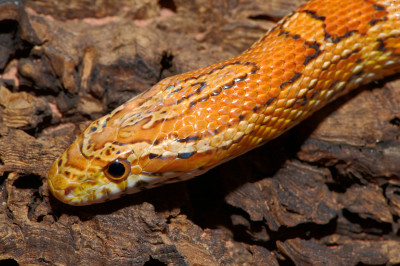
Lamprophis/Boaedon fuliginosus
"the African house snake"
This snake species, of the Lamprophiidae family, is distributed in dry habitats across Africa. Although it does not include many colour morphs, the species is of particular interest in our lab because it reproduces over most of the year. Therefore, we can collect more clutches of eggs in comparison to the corn snake. Hence, we use this species to investigate the post-placode morphogenesis of scales in snakes.
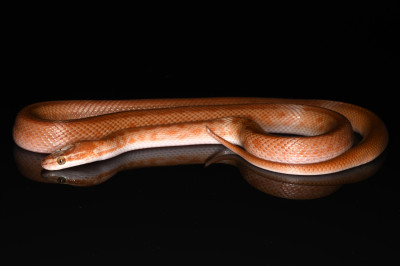
Crocodylus niloticus
"the Nile crocodile"
Among the largest crocodiles, this species is found in rivers and swamps (more rarely in brackish water) across sub-Saharan Africa and western Madagascar. In 2016, we put a long-debated controversy to rest (whether amniote skin appendages are homologous or not) by demonstrating that scales in all reptiles develop from placodes with all the anatomical and molecular signatures of avian and mammalian placodes. This conclusively indicates that reptilian scales, avian feathers and mammalian hairs, despite their very different final shapes, are indeed homologous, i.e., they evolved from the scales of their reptilian common ancestor. There is however one exception: the head scales of crocodiles. Indeed, we have shown that, while their body scales develop from placodes, the pattern of polygonal irregular non-overlapping scales on the face and jaws of crocodiles emerges from a mechanical developmental process. We continue to investigate the nature and origin of the stress field driving this patterning process. Note that we have also shown that their so-called ‘small integumentary sensory organs’ (distributed across head and body) are not only mechanosensory, but additionally exhibit a combined sensitivity to mechanical, thermal and pH stimuli.
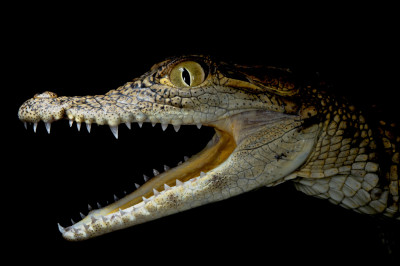
Gallus gallus domesticus
"the chicken"
Yes, birds are nested ;-) within Reptilia. Indeed, birds are grouped with crocodilians into the lineage Archosauria, while turtles are the sister group to Archosauria. The chicken was domesticated from the junglefowl of Southeast Asia approximately 8000 years ago. In addition to its use in farming, the chicken is also a widely employed model for understanding embryonic development. Importantly, the chicken has multiple types of skin appendages including both feathers and diverse scale types. Using a technique developed in our lab, we can rapidly and precisely modify the embryonic development of chickens via drug injections directly into veins underlying the eggshell. This can teach us how skin appendages with very different morphologies develop in the embryo. Importantly, despite its domestication, the chicken can be used as a proxy for understanding the development of diverse avian morphological characters.
